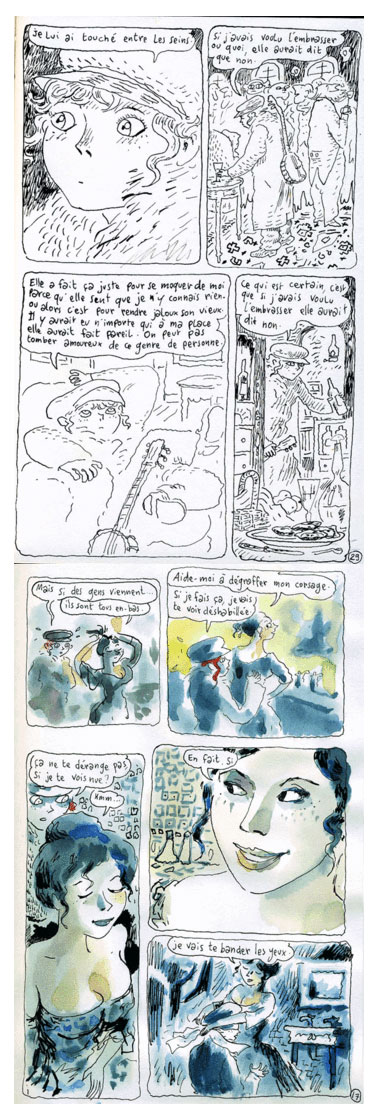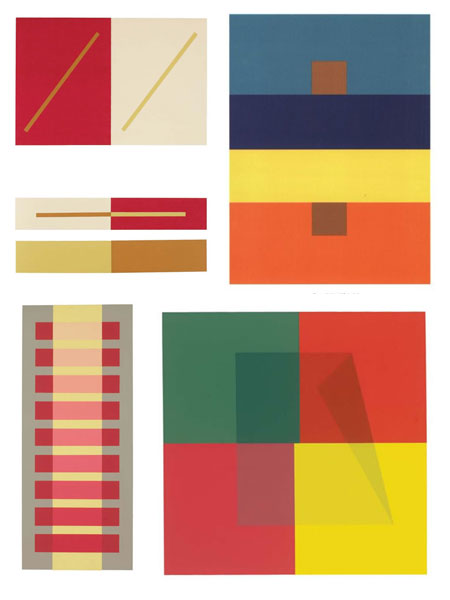I’m going to teach myself color. It’s something I’ve never understood, and something I’ve never really been able to do. I’m sure that somewhere I have a subconscious understanding of it, but I just can’t consciously create effects using it. I suppose the solution is getting out a big box of crayons and starting to play, but I’ve been putting it off.
Last night I was reading Joann Sfar’s Klezmer, Book One. He is brilliant: he doesn’t plan anything when he writes it, he just cuts loose and lets the story dictate where it goes. His line is so free and sketchy, he just knocks the thing out. (This is why he has more than 100 books to his name.) He sent The Rabbi’s Cat to a colorist, but for this one, i think he did his own color (at least I couldn’t find a credit for another colorist.)
Look at the way his drawings are transformed by color:

I keep wanting Meg to teach me, because she’s a master of color, but we’re so busy that I don’t see it happening any time soon.
So I turn to books. Right now, it’s Josef Albers’ Interaction of Color. Page 8:
On the blackboard and in our notebooks we write: Color is the most relative medium in art.
The book’s aim is to show that colors work only against other colors, and that pleasing effects arise out of these juxtapositions. (When Meghan was learning to paint, her teacher would only let her use color — no blacks, no whites!) This was a big slap in the forehead for me, because my only foray into color has been to use it to accent black and white drawings. Albers uses several examples with colored paper to show different effects:

Meghan did a series of collages last year that were very similar to these paper confections: strips of pure color that she was arranging into these really cool landscapes. I can’t find a scan of them anywhere right now. Maybe I’ll post them later.
Either way: look out color, here I come.
I don’t let my students use black or white most of the time, because they end up making really black paintings with virtually no color. Then again, it is elementary school. Its an aesthetic of convenience, because there’s only six spots in the paletes. Plus, there’s this unwritten rule that when you hang up the student work the hallways should be bright and fun looking.
I made the kids do brown monochromatic underpaintings before adding color when they learned about rembrandt and chiarascuro and they hated it. It was especially hard for the African American kids to grasp that they needed more than brown on their paper in order to complete the picture and being white myself I had little experience manipulating the materials to make a self portrait of this nature.
Grant,
Here is the color theory I remember from elementary school:
(sung to the tune of “Three Blind Mice”:)
Red, Yellow, Blue
Red, Yellow, Blue
I love you
I love you
You are the primary co-lors
You make all the other co-lors
Red, Yellow, Blue
Red, Yellow, Blue